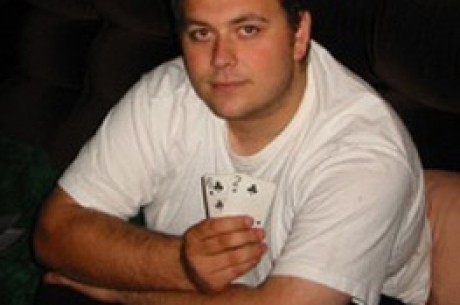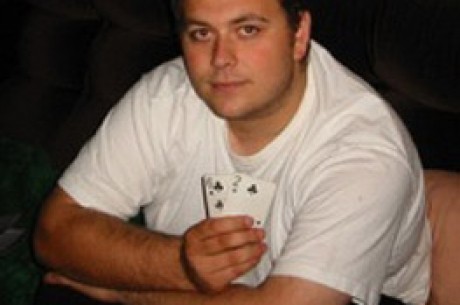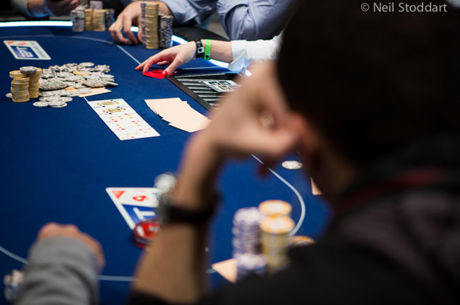Poker Strategy: In the Mix -- Get Up on the H.O.R.S.E.

One of the trends that emerged from the 2008 World Series of Poker when compared to the 2007 WSOP was an increase in the number of entries for non-hold'em events. Entries into hold'em events remained relatively constant in 2008, with only a modest 2.4% increase over 2007. Most of that increase was due to more convenient weekend scheduling of the seven $1,500 no-limit hold'em. These events tend to attract the highest number of recreational players, players who want to say that they took a shot at playing the World Series of Poker and winning a coveted gold bracelet. Without this scheduling change, the number of entries into hold'em events would most likely have decreased. The limit hold'em and six-handed no-limit hold'em events saw an increase in entries of only 1.7% each; the pot-limit hold'em events declined 6.6%.
On the other hand, the number of entries for almost every other type of game increased, before considering the addition of new events and without convenient weekend scheduling. Omaha events were up 12.2%; lowball events were up 23.5%; and mixed events �� events where more than one game is played, with the game changing after a set number of hands or set amount of time �� were up 5.9%. Only entries into seven-card stud events saw a decline since 2007, but that 8.5% decrease can be partially explained by the fact that the "world championship" events for seven-card stud and seven-card stud hi/lo had their buy-ins significantly increased, from $5,000 and $3,000, respectively, in 2007 to $10,000 and $5,000, respectively, in 2008.
Also notable were the number of non-hold'em cash games that were being played at the WSOP. In addition to pot-limit omaha and omaha hi/lo split, it was common to see games like $20-$40 B.O.T.E. (badugi, omaha hi/lo split, deuce-to-seven triple draw and stud hi/lo) being played. This is a trend that has been reflected across the country, with the rise of regular games like the $10-$20 O.E. game at the Borgata in Atlantic City and low-limit H.O.R.S.E. cash games and tournaments in poker rooms all around Las Vegas and on popular online poker sites like PokerStars and Full Tilt Poker.
These games were always played at the highest limits in poker rooms across the country. The best players in the world, the players who convene in Bobby's Room at the Bellagio, regularly play mixed games. Rather than being able to specialize in one form of poker (for example, no-limit hold'em), these world class professionals are required to master many different games in order to remain competitive with their peers. Such mastery also allows them to sit down in any game, anywhere in the world, and have an edge against their opponents no matter what form of poker is being played.
Those same world-class professionals are the people who lobbied for the creation of a new WSOP event in 2006 �� the $50,000 H.O.R.S.E. event. That event quickly became extremely prestigious for being what many players view as the best all-around test of poker skill, moreso than winning the Main Event. Players need to have excellent knowledge of and skill in five different games, encompassing two different disciplines: flop games and stud games. $50,000 is a lot of money to put for one tournament if a player is not confident of his or her skill level in all five games in the mix.
The mixed game trend continued at the 2008 WSOP with the introduction of another new event, the $10,000 "Super Mix" event. In that event, play rotated between eight different games: deuce-to-seven triple draw; limit hold'em; Omaha hi/lo split; razz; seven-card stud; seven-card stud hi/lo split; no-limit hold'em; and pot-limit omaha. Despite such an event never being played previously at the WSOP, 192 of the world's best players ponied up the $10,000 buy-in.
With hold'em seemingly "tapped out", increased emphasis on mixed games and the multiple skills they require may represent the next evolution in poker. Of course, there are still plenty of people who are yet to jump on the mixed-games bandwagon, people who believe limit poker is somehow less skillful than its no-limit counterpart.
Thus is untrue: the amount of luck involved in a game like H.O.R.S.E. is exactly the same as the amount of luck involved in a game of no-limit hold'em. The difference is that the betting structure of no-limit hold'em allows players to do two things more effectively: bluff, and force players with drawing hands to fold. That's not to say that bluffing and forcing draws to fold is impossible in a game like H.O.R.S.E.; just that H.O.R.S.E and other mixed games, like any form of limit poker, require players to assume that there will be play after the flop and to adjust accordingly, whether by incorporating more draws into their own game, by learning how to win an extra bet when they have the best hand, or by learning how to save an extra bet when their hand is second-best. These skills are even more important in a tournament situation, where accumulation and preservation of chips is paramount.
There's another side of mixed games to consider: the player that is well-rounded in all games in the mix, whether the format is H.O.R.S.E., S.H.O.E., B.O.T.E, H.O.E. or B.T.O., has a significant advantage over opponents who may have a mastery of one game but only rudimentary knowledge of the other games in the mix. At cash games limits as high as $20-$40 and tournament buy-ins as high as $1,500, it's not uncommon to find players in a mixed game who have never played razz, or badugi, or seven-card stud hi/lo or who have, at best, a tenuous grasp of the basic strategies of one or more of the games in the mix.
Over the coming months, this column will explore the various skills required to play in mixed games, both in cash games and in tournaments. In some cases the column will take a "macro" approach, looking at strategies that are applicable to mixed games generally. Other times the column will focus on a particular hand of a particular game from a mixed game format (cash game or tournament) and explore the various lines that could possibly be taken with the hand. Overall, the goal of the column is to bring mixed-games knowledge, strategy and experience to a broader audience.








